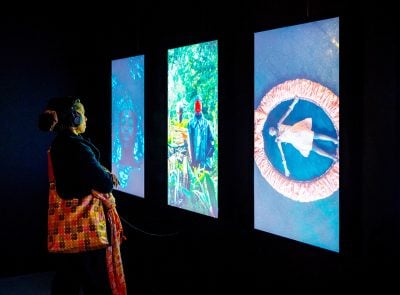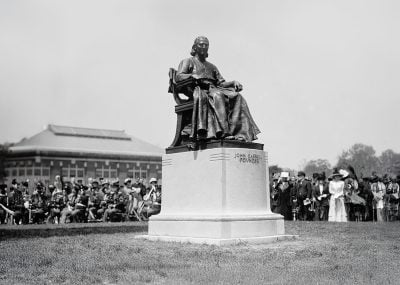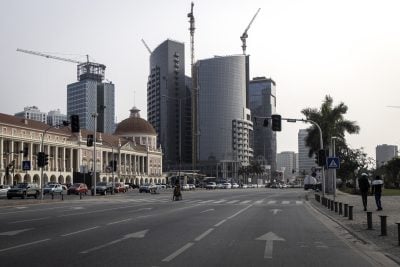Bad neighbours
Yet these three troubled states have quite a lot in common. They are all in the centre of the continent, with no access to the coast (apart from a very small strip of Atlantic seaboard in the case of DRC). They are all Francophone. They were all run by colonial masters and their chosen successors who showed no interest in building a diversified economy or the institutions of civil society. And of course they are all neighbours – and bad neighbours have a habit of exporting whatever is wrong with them to the nearest and most susceptible.
In other words, the three ugly sisters are a self-supporting band, a mutually destructive circle where any one member always has enough trouble to spare if trouble runs short in either of its neighbours. And if Africa cannot mend its damaged heart, not only will the instability in central Africa continue, it may also spread. So what measures tell us that there is something wrong with the three sisters? The most basic figures are the World Bank’s development indicators, and they are harsh enough. The DRC, a country of 65m people and in terms of unexploited mineral reserves possibly the richest country on earth, is in real income terms one of the world’s poorest. Per capita income is only $230 a year, more than two thirds of the population is on or below the poverty line, and average life expectancy is only 50 years.
None of the three countries spends more than $25 per head of population annually on healthcare, while in DRC the per capita healthcare bill is a mere $15
In DRC’s neighbour to the north, the Central African Republic per capita income is higher at just over $500 a year but that is more a function of the small population of just 4.5m than anything to do with individual wealth and quality of life – indeed, life expectancy in the CAR is even lower than in DRC, at 49 years. The most northerly of the three sisters, Chad, is significantly better off than either of the other two, with per capita income of $970 (thanks largely to oil), yet life expectancy is only 51 years, and around half the population are below the poverty line.
What these figures underline is that per capita income is not very closely related to living conditions. The income figures show that on paper, the 12m people of Chad are more than four times better off than the citizens of DRC. But in reality these figures are more or less meaningless in economies where most of the wealth is generated by mineral exploitation, and most of that flows into the pockets of whoever happens to be in government.
Much more meaningful are the figures on poverty and life expectancy: compare, for example, resource-poor Uganda, a neighbour of DRC, where per capita income is only $480 a year (lower than either CAR or Chad), yet where less than a quarter of the population are in poverty and where life expectancy is almost 10 years longer than in the ugly sisters. Or compare Rwanda, another neighbour of the ugly sisters, where per capita income is $600 yet life expectancy is now 63 years.
Life expectancy is one of the most fundamental measures of quality of life. Healthcare, nutrition and sanitation are the most important determinants of life e xpectancy – and on all three measures the ugly sisters score poorly, with none of the three spending more than $25 per head of population annually on healthcare, while in the case of DRC the per capita healthcare bill is a mere $15.
xpectancy – and on all three measures the ugly sisters score poorly, with none of the three spending more than $25 per head of population annually on healthcare, while in the case of DRC the per capita healthcare bill is a mere $15.
Figures like these are not just the result of poverty – by way of comparison, Uganda is a poorer country than Chad in income terms, but spends more than double on healthcare per head of population.
In the case of the ugly sisters, there is also a darker reason for poor life expectancy, for these are countries that have been in an almost perpetual state of conflict. Dictators have followed dictators, civil wars have followed civil wars, while guerrilla groups inside the three countries and armed by neighbours have fought for control of the resources that all three countries harbour.
In terms of intensity of conflict, the worst case has been the DRC. The death toll in the on-off civil war that followed the demise of dictator Mobutu Sese Seko has been calculated at over 3m, making it the conflict most destructive of human life since the Second World War. Also destructive but much harder to calculate has been the effect of conflict entrenching poverty. As militias and invading armies have swept to and fro in eastern DRC, the endemic insecurity has undermined what little authority the government had in some regions, and made real development near impossible – as a result, DRC has some of the lowest intensity of infrastructure in the world.
Almost all of DRC’s neighbours have experienced some kind of instability spilling over from the DRC wars, whether through the use of DRC bases for anti-government groups such as Joseph Kony’s Lord’s Resistance Army, or the Hutu militias of the Democratic Forces for the Liberation of Rwanda, or through refugee movements across DRC’s borders, or simply through the easy availability of arms.
The DRC’s northern neighbour, the Central African Republic has, if anything, an even worse backdrop of a very weak government presiding over a ruined economy in a country marked by escalating conflicts. As Nicolas Tiangaye, the last Prime Minister of the CAR, himself said, it is a ‘non-state’ – and in 2014 it remains quite unclear whether it will avoid become a full-blown failed state. At the moment it is continuing to export refugees and instability – primarily to its northern neighbour Chad.
Chad is the richest of the ugly sisters – but that wealth is primarily oil wealth, which as in other oil-rich states, tends not to end up in the pockets of ordinary citizens. Once a French colony – and by universal agreement the worst-run of France’s African possessions – Chad has for the last half century seen a succession of insurgencies periodically suppressed by dictatorships, and is still suffering the aftereffects of the repressive rule of Hissène Habré, who was overthrown in 1990 and is currently on trial for war crimes.
The legacy of civil conflicts is one of extraordinary underdevelopment – Chad has the lowest proportion of paved roads in Africa, the highest rate of illiteracy, and more than one in five children die before their first birthday.
Want to continue reading? Subscribe today.
You've read all your free articles for this month! Subscribe now to enjoy full access to our content.
Digital Monthly
£8.00 / month
Receive full unlimited access to our articles, opinions, podcasts and more.
Digital Yearly
£70.00 / year
Our best value offer - save £26 and gain access to all of our digital content for an entire year!
 Sign in with Google
Sign in with Google 


